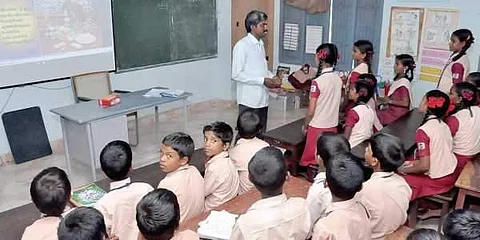

Education is the ladder of social and economic mobility. For example, it allows a child of a daily wage labourer to become a teacher, electrician, nurse or pharmacist and the child of a small-time trader to become an engineer, doctor or industrialist. This upliftment is not individual-centric — as entire generations benefit from this.
Therefore, it is a universal task of the government to ensure the existence of such ladders of learning exist everywhere — and are as sturdy as they are spacious.
The ladders do not need to be government-provided; there can be as many or more privately offered alternatives too. The choice should belong to parents and children as to which of these ladders they invest their hard-earned money in.
Education can be government-financed without being government-provided. For example, the government can provide the parent or guardian of each student with a handsome voucher to be used at any school of choice, public or private.
This would help parents and students raise awareness about specific educational problems and opportunities in their localities — an opportunity for the government to tap into.
Besides public financing in school education, the government’s role is to ensure and enforce academic and financial discipline, so that education across levels and schools is effective.
Nurturing a child’s soul and building character is a lofty goal for education. For that, it must teach science, mathematics, and literature, as well as music, sports and games.
In India, we may insist upon a minimum of the three traditional Rs of Reading, wRiting, and aRithmetic reaching every child without fail.
Wanting every citizen to be educated enough to comprehend the world around them and function productively is a matter of public interest. In its own Indian Education Report, the government recently said:
“It does not require clever tools of measurement to demonstrate that there are millions of children in India who are totally deprived of any education worth the name. And it is not as if they are invisible, remote, and therefore unreached. They are everywhere in the cities: on the streets, wiping cars at traffic junctions, picking rags in mounds of waste; in the roadside eateries; in small factories, as cheap labour or domestic help; at ‘home’ completing household chores.
In the villages again they are everywhere, responding to the contextual demands of family work as well as bonded labour.”
Our schoolchildren have ranked at the bottom in standardised international testing in recent years, while our top higher educational institutions fail to reach global standards.
Indian students performing well in foreign educational systems only reinforces the idea that they must escape the Indian system to do so — and a “brain drain” is somehow inevitable.
This begs the question: Should our finest talent migrate abroad to serve foreign nations after being educated at India’s expense?
